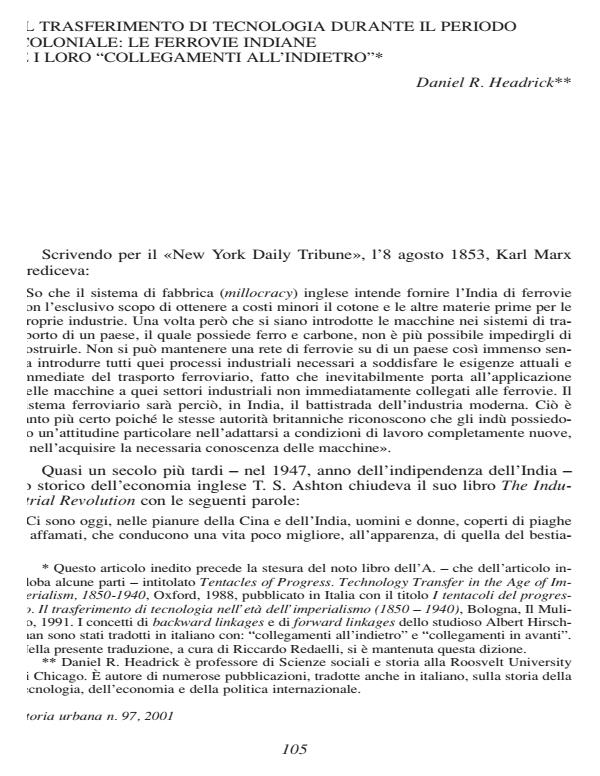Il trasferimento di tecnologia durante il periodo coloniale. Le ferrovie indiane e i loro "collegamenti all'indietro"
Journal title STORIA URBANA
Author/s Daniel R. Headrick
Publishing Year 2003 Issue 2001/97
Language Italian Pages 21 P. File size 111 KB
DOI
DOI is like a bar code for intellectual property: to have more infomation
click here
Below, you can see the article first page
If you want to buy this article in PDF format, you can do it, following the instructions to buy download credits

FrancoAngeli is member of Publishers International Linking Association, Inc (PILA), a not-for-profit association which run the CrossRef service enabling links to and from online scholarly content.
By the 1940s, India had obtained the fourth longest railway network in the world. Yet its industrialization was delayed until after its independence in 1947 by British colonial policy. Until the 1930s, both the Indian government and the private railway companies hired only European supervisors, engineers, and even technical personnel such as locomotive drivers. The government’s Stores Policy required that bids on railway materiel be presented to the India Office in London, making it almost impossible for enterprises based in India to compete for orders. Likewise, the railway companies purchased most of their materiel in Britain, rather than in India. Although the railway maintenance workshops in India could have manufactured as well as repaired locomotives, the railways imported almost all of them from Britain, and the rest from Germany, Belgium, or the United States. The Tata company built a steel mill in India before World War I, but could not obtain orders for rails until the 1920s and 30s. It was not laissez-faire, but deliberate colonial policies that prevented the natural link-ages between railways and their suppliers. The consequence was to delay the industri-alization of India by half a century.
Daniel R. Headrick, Il trasferimento di tecnologia durante il periodo coloniale. Le ferrovie indiane e i loro "collegamenti all'indietro" in "STORIA URBANA " 97/2001, pp , DOI: